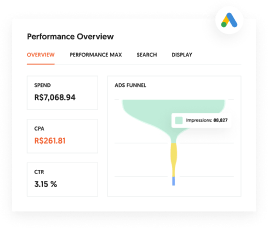
Every Amazon seller knows how difficult it is to track and measure the impact of external advertising channels on sales. It doesn’t matter how you are driving clicks to your Amazon page; once consumers land on the website, it’s anyone’s guess what happens.
Thankfully, that’s not the case anymore. Amazon Attribution makes it possible for certain sellers to track what happens to every user they send to the platform. In this post, I’ll explain everything you need to know about Amazon Attribution, including:
- Who can use Amazon Attribution
- The benefits of using Amazon Attribution
- How to set up Amazon Attribution
- What you can track using Amazon Attribution
- Essential lessons to power your Amazon Attribution strategy
What Is Amazon Attribution?

Amazon Attribution is a tool that lets you track, attribute, and optimize your non-Amazon marketing campaigns, so you can grow your Amazon business.
Specifically, the tool provides analytics insight into how non-Amazon marketing channels like search, social media, display, PPC, and email marketing impact sales on Amazon. It can also track traffic sent to a different website that ultimately converts on Amazon.
Access to Amazon Attribution is available through either the platform’s self-service console or through tools that already integrate with the Amazon Advertising API.
What Does Amazon Attribution Cost?
Amazon Attribution is available for free, which is great news for e-commerce owners.
Who Can Use Amazon Attribution?
Amazon Attribution is currently only available to sellers enrolled in Amazon Brand Registry, vendors, KDP authors, and agencies that have clients who sell products on Amazon. Users must be based in one of the following countries:
- U.S.
- Canada
- Mexico
- Germany
- Spain
- France
- Italy
- The Netherlands
- Portugal
- UK
- Egypt
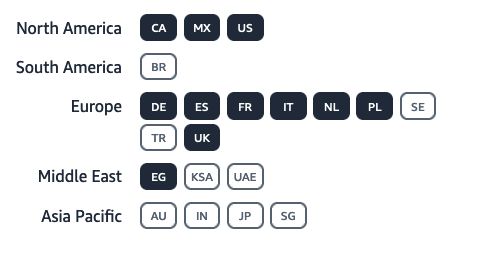
What Can You Track Using Amazon Attribution?
Amazon Attribution lets you track a range of metrics that can impact e-commerce sales, including:
- Click-throughs
- Impressions
- Detailed page views
- Purchase rate
- Add to cart
- Total sales
How Does Amazon Attribution Work?
Amazon Attribution uses parameterized URLs—essentially a tracking URL. When users click on the link and go to your store, Amazon can track precisely what they do.
It’s a bit like a combination of Facebook’s Pixel and Google Analytics. Everything users do once they click on your ad is tracked, and you can see it all in an easy-to-use dashboard.
What Can’t Amazon Attribution Do?
The only problem with Amazon Attribution is that you can’t send data back to ad channels. And that means you can’t use Amazon Attribution for retargeting purposes. This is different from the Facebook Pixel, which lets you use data collected by Meta to retarget people in new campaigns.
Unfortunately, Amazon doesn’t like you taking customers away from its platform. It also means you can’t use data from Amazon Attribution to fuel the automatic optimization features on Google and Facebook Ads.
4 Amazon Attribution Features You’ll Want to Try
Amazon Attribution isn’t just a URL tracking tool. It has several features marketers will want to leverage.
1. Full-Funnel Amazon Analytics
Amazon Attribution significantly increases the number of sales funnel data brands have access to. You’re not just limited to conversion data. Instead, Amazon lifts the curtain on how consumers interact with your product on their platform, providing metrics like clicks, detailed page views, and how many times customers add your product to their basket.
2. On-Demand Amazon Conversion Metrics
You can see campaign performance as and when it happens. Real-time reporting means marketers can optimize their marketing campaigns faster than ever before.
3. Customer Insights
Because of the wealth of metrics Amazon Attributes provides, marketers can understand how the users they send to their store behave once they get there. Do they add the product to their basket as soon as they land on a page? Do they find a different product they prefer? Do they not buy anything at all? Amazon Attribution lets you answer all those questions and more.
4. Separate Tracking for Each Advertising Channel
Amazon Attribution lets marketers create different tags for every marketing channel. Facebook Ads, Google Ads, blog posts, social media posts, it doesn’t matter. You can make hundreds of tags so you always get granular detail on the performance of every channel.
Why Is Amazon Attribution Such a Big Deal?
It’s not an overstatement to say Amazon Attribution could become a transformational tool for sellers and vendors. Before the tool was created, tracking off-Amazon marketing campaigns was an absolute nightmare.
There was simply no way to differentiate traffic from separate marketing channels. It was all dumped together.
Let’s say you made 500 sales, and you know that your own Amazon ads generated 100 of them. That leaves 400 sales that could have come from any marketing channel or even through an organic Amazon listing.
Do you see what a problem that is for marketers trying to find the best channel? There’s no way they can tell.
Amazon Attribution changes everything completely. Now marketers and brands can see precisely where each sale comes from, and that comes with a bunch of benefits.
4 Benefits of Using Amazon Attribution
“Why use Amazon Attribution in the first place?” I hear some of you ask. There are several reasons eligible brands should start using Amazon Attribution immediately. Here are my top three.
1. It Gives You Full-Funnel Analytics
If you run multiple marketing campaigns, keeping track of everything in one place is vital. That’s what Amazon Attribution gives you in the form of full-funnel attribution. You can measure the impact of all of your campaigns, how they interact with each other, and the extent to which they drive traffic to Amazon. Amazon Attribution covers all standard traffic metrics (impressions and clicks), but also Amazon-related metrics such as Add to Cart Clicks and purchases.
2. It Identifies the Most Valuable Marketing Channels
It’s not always easy to calculate the ROI of your non-Amazon marketing efforts, especially if you use multiple channels. Amazon Attribution allows sellers to see exactly which advertising efforts drive the most sales and provide the highest ROI. With a clear picture of what’s working and what’s not, store owners can focus on their most profitable channels.
3. It Optimizes Existing Campaigns
Amazon Attribution lets you understand how users interact with your store and the broader Amazon ecosystem. If traffic from one demographic converts better than others, you can optimize your existing campaigns to drive more users that do convert and fewer of those that don’t. Without Amazon Attribution retailers have no way of knowing which campaigns are driving the most traffic to their store and no way of knowing which campaigns they should scale or optimize to improve their ROI.
4. It Can Drive More Sales
Some sellers may find the concept of sending external traffic to Amazon strange, but it’s becoming increasingly important. Amazon is becoming increasingly dominant in e-commerce. At the same time, the price of sponsored ads on the platform continues to rise.
Why Drive Traffic to Amazon in the First Place?
When you understand which marketing channels are most effective and how consumers interact with your products on Amazon, you can start to make real, data-backed decisions. The kind of decisions that will help you sell more on Amazon. For some, that could be investing more in a specific marketing channel. For others, it could be adjusting the price of their products.
What’s more, new sellers are signing up to Amazon every day. In 2020, for instance, Amazon reports that 200,000 new third-party sellers joined the website, a 45 percent increase from the previous year. With so much competition, external traffic can be a vital lifeline to help sellers survive.
Reduce Amazon Advertising Costs
External traffic helps you sidestep the competition for listings on Amazon and drive traffic directly to your storefront. There’s no need to pay for sponsored ads on Amazon when you drive traffic directly to your products.
Boost Your Seller Rank
External traffic can seriously increase the number of sales your store makes. This can have a huge impact on your overall sales. Sales velocity is one of the ranking factors Amazon uses in its A9 algorithm, so the more sales you’re making, the higher your products will rank in the future.
Better Understand Your Amazon Customers
The insights from Amazon Attribution can help you learn more about your customers than ever before. You may find that one product doesn’t convert as well as you thought it did, for instance. Or that customers prefer one product over another.
You won’t just be improving your Amazon store’s performance, either. These kinds of insights can improve your business outside of the Amazon platform, too.
Increase Brand Awareness
Do you just want to be known as a brand within the Amazon ecosystem? Or do you want to create the kind of brand that people recognize everywhere? By creating off-platform campaigns, you can significantly increase brand awareness. This can make it more likely for customers to choose your products when browsing Amazon as a result.
How to Set Up Amazon Attribution
The first step to getting started with Amazon Attribution is filling out a signup form and logging in to your account.
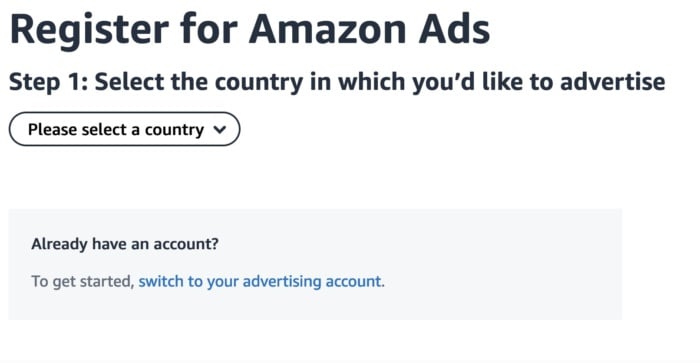
Once your account has been approved and set up, you can start matching products to the campaigns you’re tracking:
- Create a tag by clicking on the relevant advertiser’s name.
- Click “New order.”
- Select the “Set up an order” parameter.
- Choose the product you want to link to by searching for your products and clicking “Add.”
- Give a name and external ID to your attribution tag. I recommend being as obvious as possible with your name, so you know which link is which (Don’t forget you’ll have a separate tag for each of your products).
- Choose where you’re going to place this link: Facebook, AdWords, etc.
- The clickthrough URL is the URL of your product. Find your product on Amazon, copy the URL, and paste it here.
- Click “Create,” and you’re done. You can now copy the Amazon Attribution tag and start using it in the wild.
Alternatives to Amazon Attribution
Amazon Attribution is an incredible tool, but unfortunately, it’s not available to everyone who sells on the platform. Luckily, there are several alternatives you can use instead.
Amazon Associates Tracking
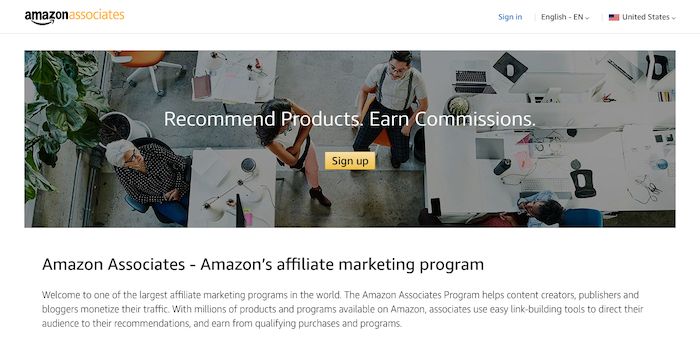
Amazon Associates tracking links were the most popular way to track external traffic to the store platform before Amazon Attribution. With Associates tracking links, you get paid a commission every time a customer converts.
Unfortunately, this tracking solution is nowhere near as in-depth as Amazon Attribution. You’ll only be able to see which items users bought, not their behavior on the site before conversion. Plus, Amazon Associates only get one tag. That means it can be hard to differentiate between traffic sources.
Pixelfy.me
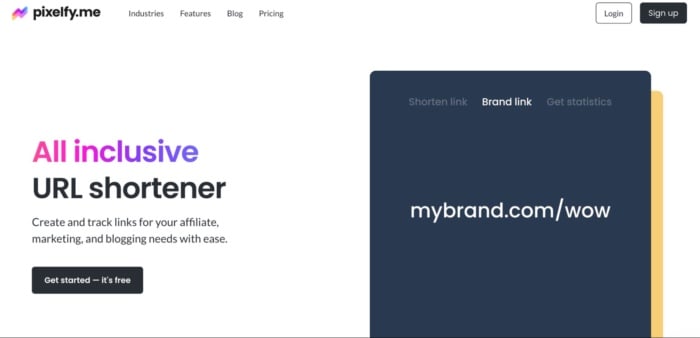
Pixelfy.me is a URL shortener and tracker built specifically for Amazon sellers. You can create and track every kind of Amazon link, including Supreme, Brand, Canonical, Store Front, Add-to-Cart URLs, and many more.
Pixelfy.me can track almost everything apart from conversions. While that’s not as comprehensive as Amazon Attribution, Pixelfy.me does let you pixel users to retarget them in the future.
Amazon Super URL Tool
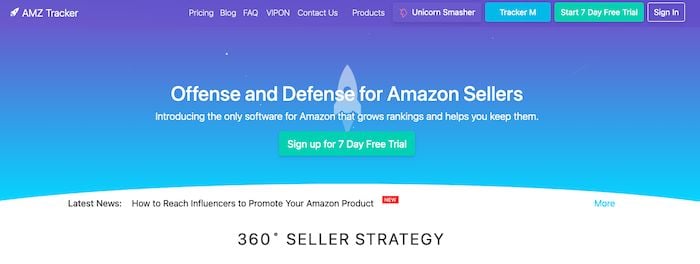
The Amazon Super URL Tool is part of the AMZ Tracker suite of tools. It does not offer sellers more insight into the way users shop their store, but it can significantly improve the quality of inbound traffic and boost sales as a result.
The platform’s special URL shortener makes Amazon believe visitors have searched for specific keywords on Amazon instead of going directly to the listing. Amazon should rank your products higher for these keywords, as a result, which can lead to more sales.
Essential Lessons to Power Your Amazon Attribution Strategy
Once you’ve got the hang of Amazon Attribution, use the following lessons to take your attribution strategy to the next level.
1. Non-Amazon Campaigns Could Be the Bulk of Your Sales
Do you know what percentage of users actually make a purchase when they visit your Amazon storefront? If you’re like the average seller, it’s about nine percent. What about the average click-through rate of Amazon ads? It’s less than one percent.
That means few people are showing up at your digital storefront and buying something on their first visit. Instead, they likely drop by, do some poking around, check out some online reviews, explore your product range, do a little more virtual window shopping, and then leave.
Maybe they return of their own volition, but they are much more likely to make a purchase when you supplement your Amazon advertising campaigns with off-platform strategies, such as SEO, PPC ads, and social media advertising.
Take outdoor brand Activ Life as an example. Not satisfied with running Amazon Ads, it advertises on Google Shopping and directs users to its Amazon storefront.
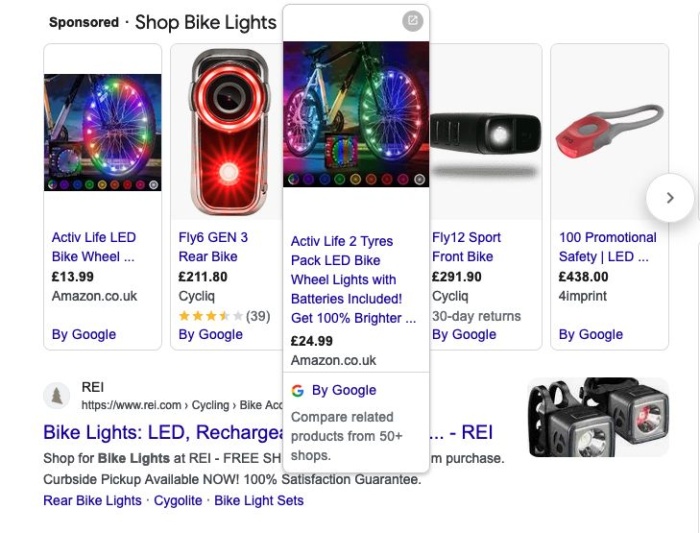
When you run off-platform campaigns, you don’t need to close customers the first time. Each interaction a customer has with your marketing leads them just a little closer to the sale. Each interaction assists in the eventual conversion. The bulk of your sales come from these assisted conversions, so you’d best be tracking them and giving at least some credit to each one so you truly understand your customer behavior and how you should be marketing to them.
I’ll say it again: assisted conversions are the bulk of your sales. Your model needs to recognize that.
2. There is No Ideal Attribution Model
It’s important to understand that Amazon Attribution isn’t perfect—no attribution model is.
Amazon Attribution covers a wide range of last-touch KPIs, like the following:
- Click-throughs
- Page views
- Adds to cart
- Purchases
- Units sold
- Product sales
But it can’t send data back to ad channels or help you with retargeting. It also only tracks a user’s last touch. That means you could be missing vital information further up the funnel.
With that in mind, you may want to look into creating a custom attribution model.
Your custom model has to reflect your customers and your business. You need to consider the behavior that’s important to your goals, and the “soft” conversions (signing up for the newsletter, requesting a customer rep contact them, and so on) that ultimately carry value because they result in sales…no matter how far down the line.
What are your top conversion paths and top assisted conversions? That tells you what your customers are doing. Are you using those to their full potential? Are you throwing money away on channels that don’t make an appearance in those reports?
Customers search, consider, and buy in different ways. Make a model that works for them and for you.
3. You Need to Rely on Data
There’s no room in attribution modeling for blind guesses. Your efforts should be guided by hard data at all times and in all things.
Rely on Amazon Attribution or your custom attribution model to collect the data you need. Set up goals and funnels. Turn to the reports to inform your decisions.
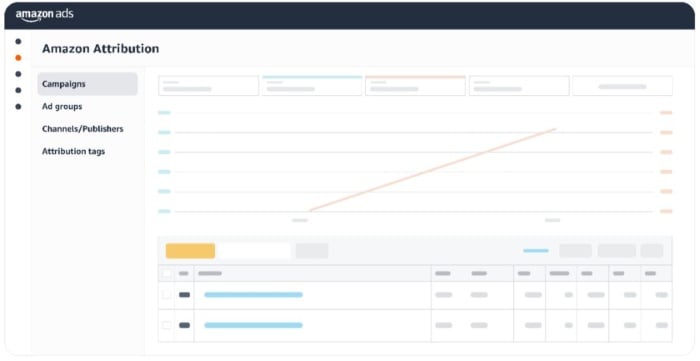
You should be tracking all your efforts as accurately as possible to guarantee solid data and insight.
- Use auto-tagging options in Adwords, Bing Ads, and DoubleClick.
- Use UTM parameters for social campaigns.
If you’re spending time, energy, or money on something, you should be collecting data on it. Far too many e-commerce retailers don’t actively check and use their analytics. Don’t fall into that group.
The more data you collect, crunch, and consider, the more accurate your decisions, and the better your understanding of the conversion paths your customers are actually taking to the (virtual) checkout counter.
4. LTV Should be Factored In
Do you want to make one sale and be done with it? Or would you prefer customers return again and again? Let’s assume the answer is obvious (because it is).
Consequently, you need to consider the lifetime value (LTV) of each customer. Far too often, though, we give little to no thought to those returning customers and the value they bring with them.
So look at the traffic in your entire funnel, especially at the top. Chances are, you’ll find a good chunk of those returning customers are coming via direct, social media, or email.
It’s cheaper to retain a customer than it is to acquire a new one. So you’d better make sure you’re recognizing the paths that are bringing them back in your attribution model, and they should carry more weight than those that bring in the new folk.
5. Campaign Tracking is a Must
Remember that famous saying: he or she who tracks, survives. Or words to that effect.
We’ve already mentioned how crucial data is to, well, everything. To keep a steady supply of that rich, zesty data flowing, you need to track your marketing campaigns. Each campaign. Every channel.
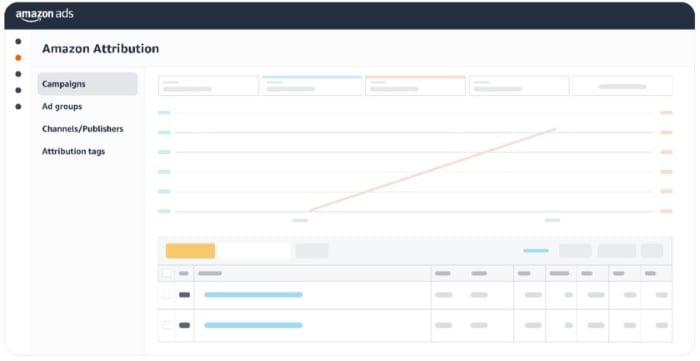
So make sure you are creating Amazon Attribution links for all of your products and adding them to every single campaign you create.
If you’re using more than one marketing channel, campaign tracking is an absolute must. Without it, you really have no idea what’s working, who’s coming from where, what to optimize, and what to scale back.
Analytics shows behavior, while attribution explores the effectiveness of the channels you’ve got in the mix. It’s the perfect pairing.
FAQs
Amazon Attribution is a measurement and analytics tool that allows advertisers to track the performance of their off-platform advertising campaigns across various channels and devices, including social media, search engines, email, and display ads.
The main benefit of using Amazon Attribution is that it allows you to track the performance of your advertising campaigns across multiple channels and devices, giving you a more complete picture of your ad performance. This, in turn, enables you to make more informed decisions about your ad spend, and optimize your campaigns for maximum ROI.
You can use Amazon Attribution to measure the effectiveness of your off-platform marketing campaigns, find the best marketing channel for driving Amazon sales, and optimize your existing campaigns to drive more sales.
Yes, Amazon Attribution is free to use for Amazon advertisers. However, there may be additional costs associated with running your advertising campaigns on other platforms.
No, Amazon Attribution is specifically designed to measure the performance of Amazon products and cannot be used to track the performance of non-Amazon products.
Conclusion
Amazon Attribution is the best way to track how off-site traffic performs on the Amazon platform. If you run external marketing campaigns for your Amazon store and are serious about optimizing your Amazon store, then Amazon Attribution is a must.
Not only can you optimize your marketing campaigns, but you can also increase conversions, too.
Creating Attribution tags is easy. Just follow my advice above or contact my team if you want an Amazon marketing agency to do the work for you.
How many external marketing campaigns are you currently running on Amazon?

See How My Agency Can Drive More Traffic to Your Website
- SEO - unlock more SEO traffic. See real results.
- Content Marketing - our team creates epic content that will get shared, get links, and attract traffic.
- Paid Media - effective paid strategies with clear ROI.
Are You Using Google Ads? Try Our FREE Ads Grader!
Stop wasting money and unlock the hidden potential of your advertising.
- Discover the power of intentional advertising.
- Reach your ideal target audience.
- Maximize ad spend efficiency.

